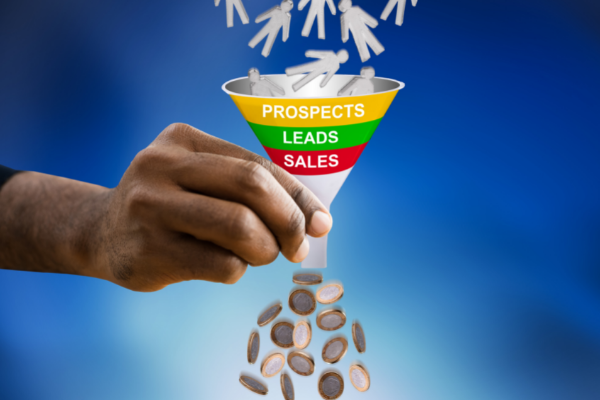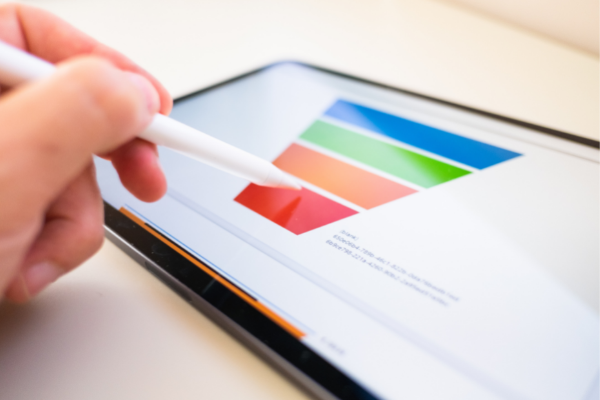How to create a simple sales funnel that aligns with your business
Whether you're a large or small business, chances are that you want the best solution to creating a simple sales funnel that allows you to move prospective customers through the pipeline and start selling to them. No, we're not psychic, we just get it.
It can be tough for both large and small businesses to figure out how to match their goals and strategy with their sales funnel. But before you lose hope, we’re going to teach you what a sales funnel is, how to apply one to your goals, and how to construct one that aligns with your business.
What is a sales funnel?
How much do you know about a simple sales funnel? Let's start with the basics. A sales funnel is a tool used to track leads in all the different stages of the sales process, from the top of the funnel to the bottom. Marketers often use the acronym AIDA when referring to the sales funnel: Awareness, Interest, Desire, and Action.
Traditionally, there are three sales funnel stages:
-
The awareness stage: the top of the funnel
In this part of the sales process, marketers should spread brand awareness in order to attract new customers. Some best practices to follow are to create promotional content and free educational content. The goal is to get some form of contact information from your prospective customer, such as an email address, so that you're able to contact them and create a tailored marketing strategy that aligns with their needs.
This is the perfect stage to create a lead magnet. Lead magnets are free products or services given out in hopes to obtain people's contact information and can often make for a higher conversion rate. Sneaky, right? Free trials and demos are often good examples of a lead magnet. Some other examples of marketing techniques to follow at this stage are SEO, sponsored social media posts, webinars, and infographics.
-
The desire and interest stage: the middle of the funnel
During this stage you're going to want to build a relationship with the lead. We aren't talking about becoming friends with all the leads, although if that's your goal, be our guest. Instead, you're going to want to find out their goals. Finding out their goals can help you better identify whether or not this person is a good fit for your product or service. You can still use a lead magnet at this stage of the funnel, though it might not be the main focus if you already have their contact information. Some forms of marketing to utilize at this stage are blog posts, free trials, free shipping, having your sales team address any FAQs the customer might have, and sending email campaigns to the email list you've generated.
-
The action stage: bottom of the funnel
Finally, we're on to the good stuff. This stage is where all the action happens - hence the name "action stage". Now that you know that the lead aligns with your business's buyer persona, it's time to start thinking about generating sales! After making the sale and continuing to nurture the customer after their purchase, you can help them seamlessly integrate the product or service into their life. After all, word of mouth is how many people find out about businesses, so we definitely want these customers to have positive things to say to their friends about your business. Some things to implement during this stage are offering special pricing packages, special training, and sending follow-up campaigns.
How to apply a sales funnel to your goals
In order to apply a sales funnel to your goals, you're going to want to do two things:
1) Set clear goals for your business - this is a crucial first step when trying to make any plan for your business.
2) Understand the stages of the sales process and create different approaches to take in each stage.
Marketers are thrown the task of creating a marketing strategy that aligns with the company's goals, and the customers goals alike. It's important to set up clear goals for both the marketing and sales teams through each portion of the customer journey in order to ensure customer retention.
How to construct a basic sales funnel
Now let’s talk about how to construct a sales funnel. In order to be successful in this, you’re going to want to have some reliable marketing and sales tools.
1) Understand your target audience
If you want to start selling, it's no doubt you're going to need to start with the basics. Create clear guidelines as to who your target audience might be. Where do they live? How much income do they have? Do they have kids? Do they have a cat? The list goes on. Setting clear guidelines as to who your target audience is will make it easier to make collateral that catches their attention and create a sales funnel that works for your business.
2) Create a content marketing strategy and a CTA (Call to Action) that catches their attention
This is where creativity comes in. You now have the power to map out your lead generation strategy through the creation of marketing collateral. Some of the best ways to capture your target audience's attention are through social media such as Instagram or Facebook, Google or Facebook ads, case studies, testimonials, webinars, and infographics. Each piece of content should serve a purpose in your marketing funnel.
3) Build a landing page
The next step is to build a reliable landing page for your business. If you're looking for a good resource to help, no matter what your stage of expertise is, let HubSpot platform can help you completely customize a landing page that aligns your sales funnel with your goals. (You'll thank us later.)
Landing pages can spell out exactly what you're offering and make it easier for a customer to make a decision whether to purchase your product or service. Plus, it can lead to a higher customer conversion rate.
4) Create an email drip
This will help you monitor potential customers in each stage of the sales funnel. Create customized email templates targeted towards each funnel stage so that you're able to nurture customers and follow them along their customer journey. If they see that you're persistent and genuinely care about their goals, chances are you're more likely to make a sale to them. Platforms such as MailChimp or HubSpot are great when it comes to using your email list to send custom campaigns to.
Working with us will continue to help you understand how to take your sales and marketing goals to the next level and get the results you’re looking for. Ready to start using your funnel and managing it the right way? Schedule a discovery session with us to help us understand how we can help your business thrive. It's free, so make sure to schedule your time here before we're booked!




